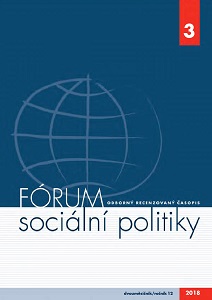Pracující ženy a zaměstnanecká nejistota (Post-krizové mezery v rámci pohlaví)
Working women and female employee uncertainty (post-Crisis variances in terms of gender)
Author(s): Marek MerhautSubject(s): Gender Studies, Labor relations, Government/Political systems
Published by: Výzkumný ústav práce a sociálních věcí
Keywords: Working women; female employee uncertainty; post-Crisis variances; gender;
Summary/Abstract: From today's perspective, it seems unlikely that society will ever reach the stage where gender in the realm of employment is no longer an important and provoking subject. The principle of the equality of all citizens regardless of gender makes up one of the fundamental rights of democratic societies. The prejudice remains that men represent the decisive economic and political power in society, i.e. its "backbone", while women are engaged solely in "complementary activities", such as the creation of the social background and the raising of children. It is seen as a natural division of roles that is in harmony with nature; indeed, this remains today one of the most widespread myths present in society. It is a perception of the world that recalls the man performing the role of warrior and hunter and the woman that of the mother. Gender equality, unfortunately, continues to be a topic that is not so important for the public that it should become an election topic and one that would sway voters to support the party that prioritises this topic. Most political parties remain reluctant to put forward a balanced ratio of women and men for election to parliamentary seats in their candidate lists, with women often being relegated to the bottom of t he list, thus suggesting that they are present merely to "make up numbers". It is essential that we distinguish between the biological differences between men and women and those that are formed within the historical, cultural and social context which, thus, can be both influenced and changed. That said, it is necessary to add that during the twentieth century the images of men and women changed radically mainly in terms of their relativisation and the so-called masculinisation of the image of women, among other things as a result of a decrease in the asymmetry of gender representation in the spheres of work and home and the commencement of the adoption by women of certain originally masculine characteristics.
Journal: Fórum sociální politiky
- Issue Year: 2018
- Issue No: 3
- Page Range: 19-21
- Page Count: 3
- Language: Czech

